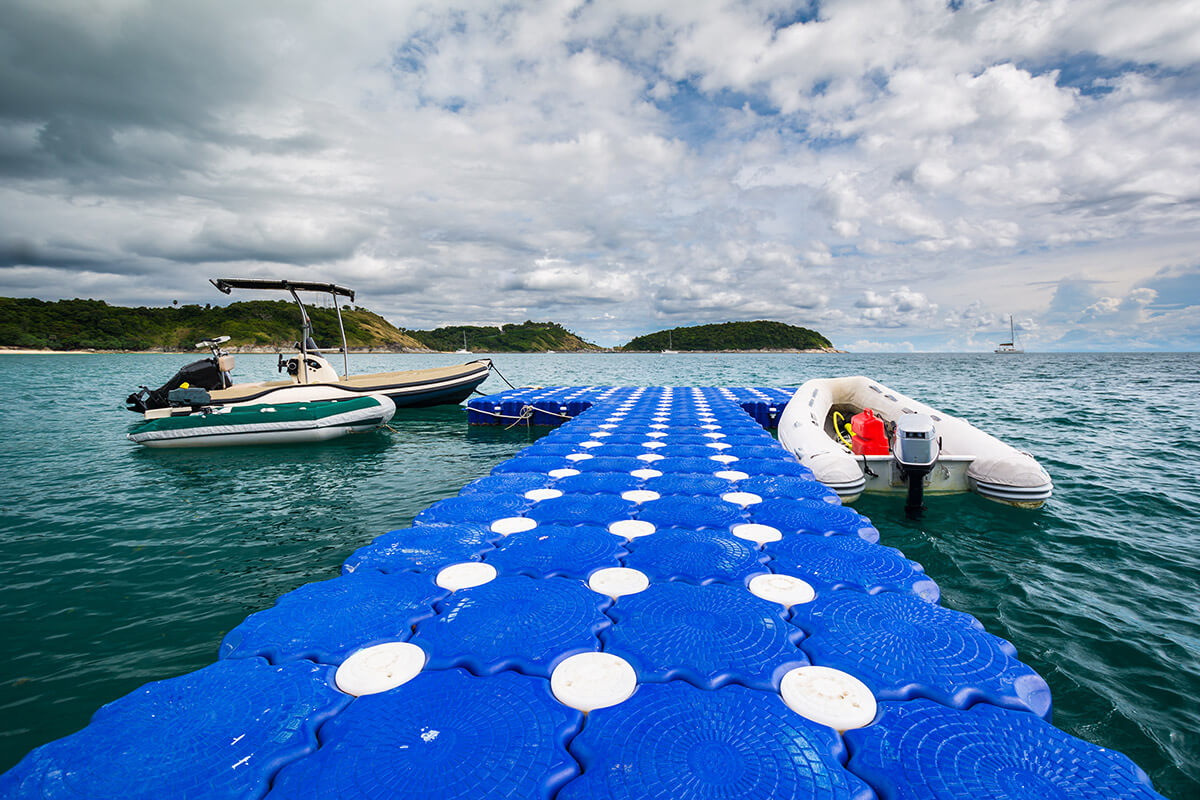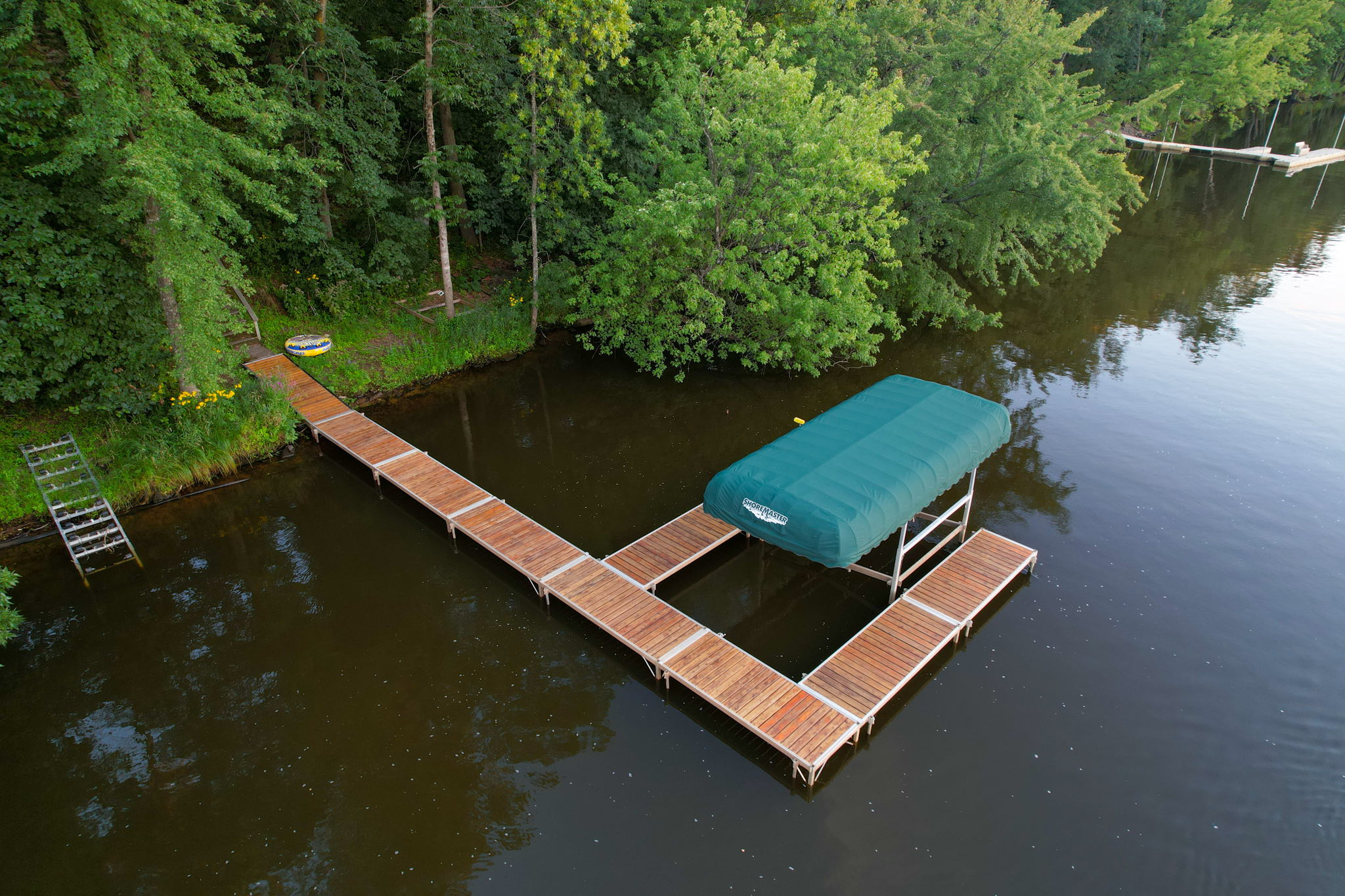Crafting Custom Solutions: Why a Floating Dock Builder is Necessary for Distinct Needs
Crafting Custom Solutions: Why a Floating Dock Builder is Necessary for Distinct Needs
Blog Article
Create the Perfect Docking Service With Floating Docks
Floating docks present a functional service for a range of maritime requirements, adapting seamlessly to rising and fall water degrees and varied vessel kinds. As we discover the necessary aspects that contribute to the effectiveness of floating docks, a number of vital aspects pertaining to stability and upkeep will arise, increasing concerns about just how to enhance your docking experience.

Benefits of Floating Docks
Floating docks deal countless benefits that make them an ideal choice for different maritime applications. One of the main benefits is their versatility to altering water degrees. Unlike dealt with docks, floating docks fluctuate with the tide, making sure regular accessibility for vessels. This feature is particularly essential in areas prone to significant tidal fluctuations or seasonal water level adjustments.
Additionally, floating docks are normally less complicated and quicker to set up compared to traditional set frameworks. Their modular design permits uncomplicated setting up and disassembly, helping with maintenance and moving when needed. This flexibility is especially valuable for momentary applications or in atmospheres where conditions might change.
Floating docks also tend to be extra eco-friendly, as they lessen disruption to the seabed and bordering water communities. Their resilient nature reduces the danger of damage to marine life, promoting a healthier setting. Furthermore, these docks can be customized to fit numerous vessel sizes, ensuring that they meet specific functional demands - dock company.
Inevitably, the combination of adaptability, ease of installment, and ecological factors to consider makes floating docks an extremely effective option for a wide variety of maritime needs.
Choosing the Right Materials
Choosing the ideal materials for floating docks is critical to guarantee long life, durability, and stability. The option of products directly affects the dock's efficiency in various environmental problems, consisting of direct exposure to water, sunlight, and prospective wear from marine web traffic.
Typical products made use of for floating docks include aluminum, wood, and high-density polyethylene (HDPE) Aluminum is lightweight, corrosion-resistant, and requires very little maintenance, making it a superb choice for longevity. Nonetheless, its initial cost can be greater contrasted to various other products.
Timber, while aesthetically enticing and supplying a traditional look, can be vulnerable to rot and pest damages otherwise properly dealt with. Making use of pressure-treated timber or normally long lasting varieties like cedar or redwood can minimize these problems.
HDPE is a prominent option because of its resistance to UV rays and chemicals, in addition to being eco-friendly. floating dock builder. It is offered and light-weight in various shades, enabling for modification
Eventually, the appropriate material choice will certainly depend upon specific requirements, consisting of budget plan, preferred visual appeals, and environmental considerations. Careful evaluation of these factors will certainly cause a successful and durable floating dock remedy.
Design Factors To Consider for Stability
When developing floating docks, making sure security is a fundamental element that can substantially affect their performance and security. Security in floating dock style is influenced by numerous variables, including buoyancy, weight distribution, and the plan of parts.
Weight circulation is critical; evenly dispersing loads across the dock prevents turning and boosts security. Larger layouts can supply enhanced stability, especially in rough water conditions, while longer docks may require added helpful hints assistances to stop drooping.
Another essential consideration is the environmental effect, consisting of wave action and see it here wind. Integrating functions such as sidewalls or skirting can help reduce the results of ecological forces, keeping security in unfavorable conditions. Inevitably, a mix of thoughtful layout, material selection, and understanding of environmental aspects will yield a drifting dock that meets both security and security requirements.
Installment Tips and Methods

Next, safeguard the necessary authorizations and follow regional laws, which may dictate installation techniques and ecological considerations. Engage a qualified contractor experienced in floating dock installations if required. Usage top notch materials created for marine environments to enhance durability and durability.
When placing the dock, align it parallel to the coastline to assist in simple gain access to. Guarantee that the anchoring system is robust, using cinder block or helical supports to support the dock against wind and wave activity. It's vital to make up seasonal water level fluctuations, consisting of potential ice motion in chillier environments.
During the installation, ascertain the dock's floatation and security prior to settling the anchoring. Frequently examine the installment for any type of indications of wear or damage. By complying with these suggestions and strategies, you can attain a secure, practical, and cosmetically pleasing floating dock setup that fulfills your needs.
Maintenance and Care Guidelines
Keeping and caring for floating docks is vital to prolonging their life expectancy check out this site and making certain safe usage. Regular evaluations need to be performed to identify any signs of wear, damages, or aquatic growth. Try to find splits, loose installations, or discolored areas on the dock's surface area, as these concerns can endanger architectural integrity.
Cleaning is important. Utilize a pressure washing machine to remove algae, barnacles, and debris, which can accumulate with time. For stubborn growth, think about ecologically friendly cleansing representatives that won't damage marine life.
In addition, examine the mooring lines and anchors often to ensure they are totally free and protected from rust. Change any kind of torn or harmed lines without delay to keep stability.
Throughout severe weather condition, such as tornados or freezing conditions, take preventive procedures. Protect the dock with additional mooring lines and, if possible, remove any kind of detachable parts to stop damages.
Verdict
In final thought, the application of floating docks provides a effective and versatile docking solution appropriate for various maritime applications. Their adaptability to rising and fall water degrees, combined with a modular layout, permits for simple customization and moving. Choosing ideal materials enhances both resilience and aesthetic allure, while careful factor to consider of stability makes certain security and long life. With proper setup and normal maintenance, floating docks can supply reputable and efficient docking experiences for a variety of vessels.
As we discover the important components that add to the effectiveness of floating docks, numerous vital aspects concerning security and upkeep will certainly arise, raising questions regarding just how to maximize your docking experience. Unlike repaired docks, floating docks increase and autumn with the tide, ensuring consistent ease of access for vessels.When creating floating docks, guaranteeing security is a fundamental aspect that can considerably affect their capability and security. Stability in floating dock style is affected by numerous variables, including buoyancy, weight circulation, and the arrangement of elements. Ultimately, a combination of thoughtful style, material selection, and understanding of environmental elements will yield a drifting dock that satisfies both stability and safety needs.
Report this page